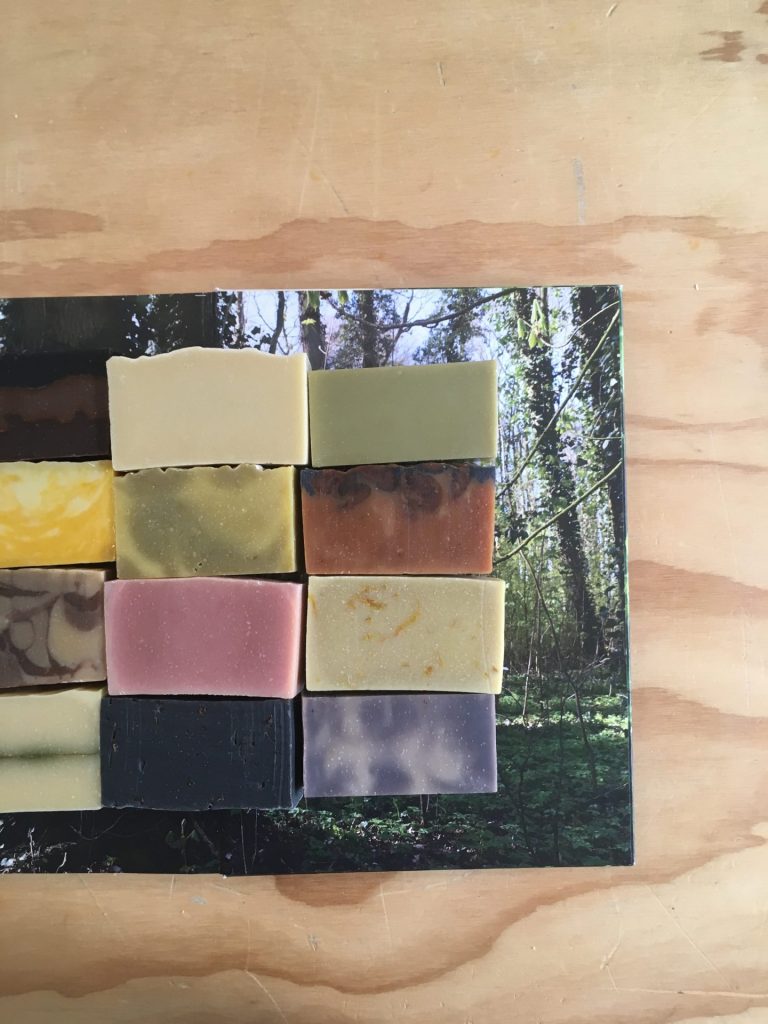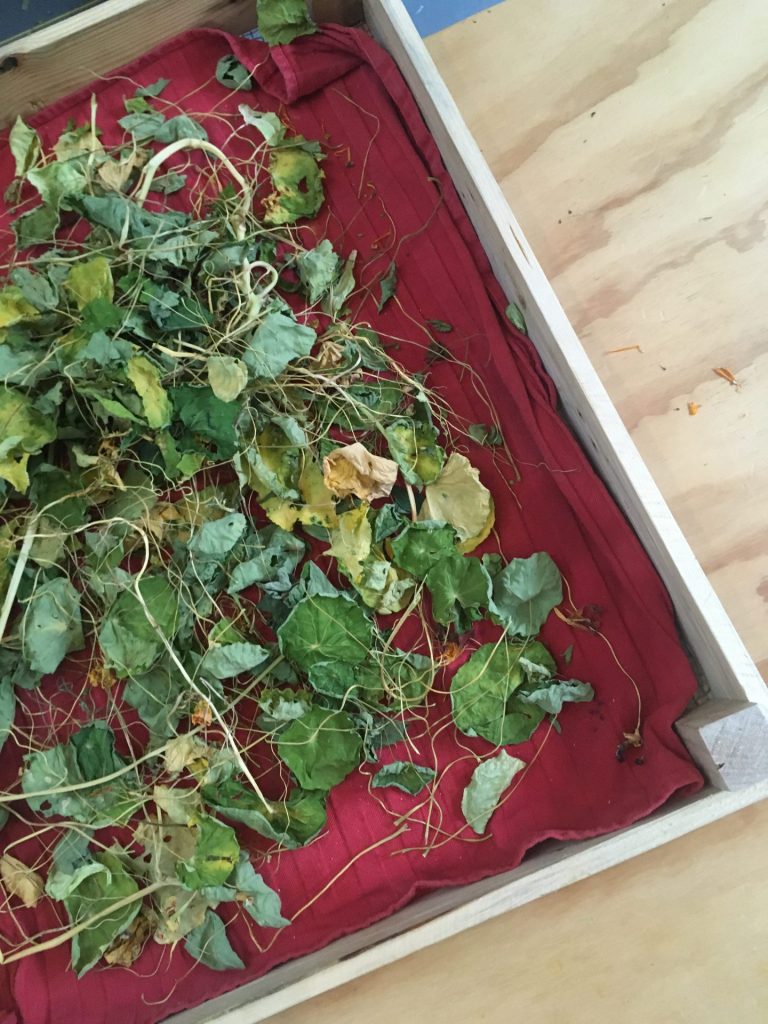
The old craft of soap making
Evelien Zonneveld discovers the old craft of soap making with a family she meets on a trip through Canada. Ten years ago, she became fascinated by the process. It looks like cooking but with ingredients such as fragrant essential oils, butters and herbs.
Back in the Netherlands, Evelien starts her company 'Werfzeep'. She now works with a nine-member team. Together they make a fixed assortment of twenty and four pure soaps, as well as limited editions, seasonal soaps and special editions. Organic shops at home and abroad purchase its products. Werfzeep' is located in 'Druk' at the Westerkade in Utrecht.
The idea of making a book on soap comes from a dream. Literally. She tells it to her neighbour, graphic designer Sappho Panhuysen (studio 'Friday'). It's the beginning of a project that leads to 'the Soap Book'.
We talk to Evelien Zonneveld and Sappho Panhuysen about the creation.




Why did you want to make a book?
Evelien: The idea was born two years ago. A book about the stories about soap, the ingredients and about the pleasure of making soap.
Sappho: Five years ago we developed the house style of Werf Soap and since then we make all their wrappers and other expressions. We thought a book was an interesting idea. I also found a book to match the soap product, so I immediately shouted: we have to make it!
Evelien: We sent some concept chapters to two different publishers but the project didn't get off the ground. That's why we decided to spend it ourselves.


What was the assignment for you as designer Sappho, and who else worked on the book?
Sappho: The book should reflect the wonderful process of making soap. An inspiration book that unravels the purely natural product and names plants and herbs so that you have a recipe that the reader can use to make their own soap. Evelien and I exchanged ideas about what a book about Werf Soap could look like. All ideas were developed in consultation and in great freedom. Content and form were developed while working. Not a delineated process but a cross-pollination in which content and design went hand in hand. The design is regularly adapted to the text and vice versa.
Evelien: Sappho and I put together the book. We also worked with an author, editor-in-chief, photographer and test soap makers and readers.
It has become a monumental book. Did you know that before?
Evelien: I was thinking about 250 pages. When it turned out that one chapter covered an average of 40 pages. We were supposed to cover 11 chapters.
Sappho: There was a large amount of suitable material, both in terms of image and content. The book could have been three times as thick. Each of the eleven chapters focuses on one plant. Although it weighs two kilos, it's a handy book.
On what basis did you choose material and shape?
Sappho: Sustainability and the origin of the paper played a major role. But also the physical appearance. How does the paper feel and how does it 'fall'? It had to be soft with some structure. We wanted a book with a round spine, a small crossing of the cover and narrower sections to make the soap recipes visible. Of course, costs also played a role in the choice of materials.


What is the power of this paper book?
Evelien: I'm crazy about books anyway, I've got countless of them. It suits me to work on a book in my forest house. I don't want instructional videos on YouTube.
Sappho: A book is tangible and physical. You're led because you can tell your story linearly. This book takes you by the hand as a reader, in a friendly, inviting and clear way.
What is the purpose of the book and for whom is it intended?
Evelien: For everyone, I hope. Anyone who wants to know more about soap. Exactly what soap is. How you're doing. Which plants you can work with. I think it's also an interesting book if you like game picking or vegetable gardening. The forest where we pick ingredients for Werf Soap is the backdrop of the book. In over 1100 photos you can see the seasons change in each chapter, while one plant is highlighted per chapter. In addition to making soap, the book teaches you how to process the plants in such a way that the good properties end up in the soap.
Who photographed?
Sappho: Some of the photos come from Evelien's archive. For years she has been recording the process of soap making as well as the ingredients and the game picking. Another, substantial part, was made by Laura de Rijk. She has made extensive series especially for this book in the different seasons. The image comes from different photographers but is still a unity. This is partly due to the attention paid to lithography. The wealth of material sometimes made choosing difficult.
What role did the printer play?
Sappho: Advising and supporting in the field of paper, binding and image processing. NPN is pleasantly perfectionist and extremely committed.
Technical details.
The book contains 440 pages inside, printed on Fly paper 130 grams color 06 extra weiss (paper mill Cordier, supplied by Papier Union Germany). Cover printed on 125 grams Wibalin natural white. Size 205 x 285 mm. The narrow recipe pages are stamped after printing and binding. The advantage is that in your design and layout you don't have to take into account exactly where they come from.
For more information read our 'tab stamping' blog




